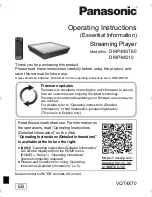
User’s Guide M-32 AD
© RME
25
12. Word Clock
12.1 Word Clock Input and Output
Input
The M-32 AD’s word clock input is active when WCK is chosen in the clock section. The signal
at the BNC input can be Single, Double or Quad Speed, the M-32 AD automatically adapts to it.
As soon as a valid signal is detected, the WCK LED is constantly lit, otherwise it is flashing.
Thanks to RME's
Signal Adaptation Circuit
, the word clock input still works correctly even with
heavily mis-shaped, dc-prone, too small or overshoot-prone signals. Thanks to automatic signal
centering, 300 mV (0.3 V) input level are sufficient in principle. An additional hysteresis reduces
sensitivity to 1.0 V, so that over- and undershoots and high frequency disturbances don't cause
a wrong trigger.
The word clock input is shipped as high im-
pedance type (not terminated). A push switch
allows for activation of internal termination (75
Ohms). The switch is found on the back beside
the BNC socket. Use a small pencil or similar
and carefully push the blue switch so that it
snaps into its lock position and the yellow LED
lights up. Another push will release it again
and de-activate the termination.
Output
The M-32 AD’s word clock output is constantly active, providing the current sample frequency
as word clock signal. In master mode, the word clock will be fixed to 44.1 kHz or 48 kHz (DS x
2, QS x 4). In any other case the sample rate is identical to the one present at the currently
chosen clock input. When the current word clock source fails, the last valid sample rate will be
held automatically.
With activated option Always Single Speed the word clock output will always stay within the
range of 32 kHz to 48 kHz. So at 96 kHz and 192 kHz sample rate, the output word clock is 48
kHz.
The word clock signal received by the M-32 AD can be distributed to other devices by using the
word clock output. With this the usual T-adapter can be avoided, and the M-32 AD operates as
Signal Refresher
. This kind of operation is highly recommended, because
•
Input and output are phase-locked and in phase (0°) to each other
•
SteadyClock removes nearly all jitter from the input signal
•
the exceptional input (1 Vpp sensitivity instead of the usual 2.5 Vpp, dc cut, Signal Adapta-
tion Circuit) plus SteadyClock guarantee a secure function also with most critical word
clock signals.
Thanks to a low impedance, but short circuit proof output, the M-32 AD delivers 4 Vpp to 75
Ohms. For wrong termination with 2 x 75 Ohms (37.5 Ohms), there are still 3.3 Vpp at the out-
put.
Содержание M-16 AD
Страница 5: ...User s Guide M 32 AD RME 5 User s Guide M 32 AD M 16 AD General...
Страница 13: ...User s Guide M 32 AD RME 13 User s Guide M 32 AD M 16 AD Usage and Operation...
Страница 21: ...User s Guide M 32 AD RME 21 User s Guide M 32 AD M 16 AD Inputs and Outputs...
Страница 28: ...28 User s Guide M 32 AD RME...
Страница 29: ...User s Guide M 32 AD RME 29 User s Guide M 32 AD M 16 AD Technical Reference...
Страница 40: ...40 User s Guide M 32 AD RME 17 Block Diagram M 32 AD...
Страница 41: ...User s Guide M 32 AD RME 41 18 Block Diagram M 16 AD...
Страница 47: ...User s Guide M 32 AD RME 47 User s Guide M 32 AD M 16 AD Application Examples...
Страница 55: ...User s Guide M 32 AD RME 55...














































